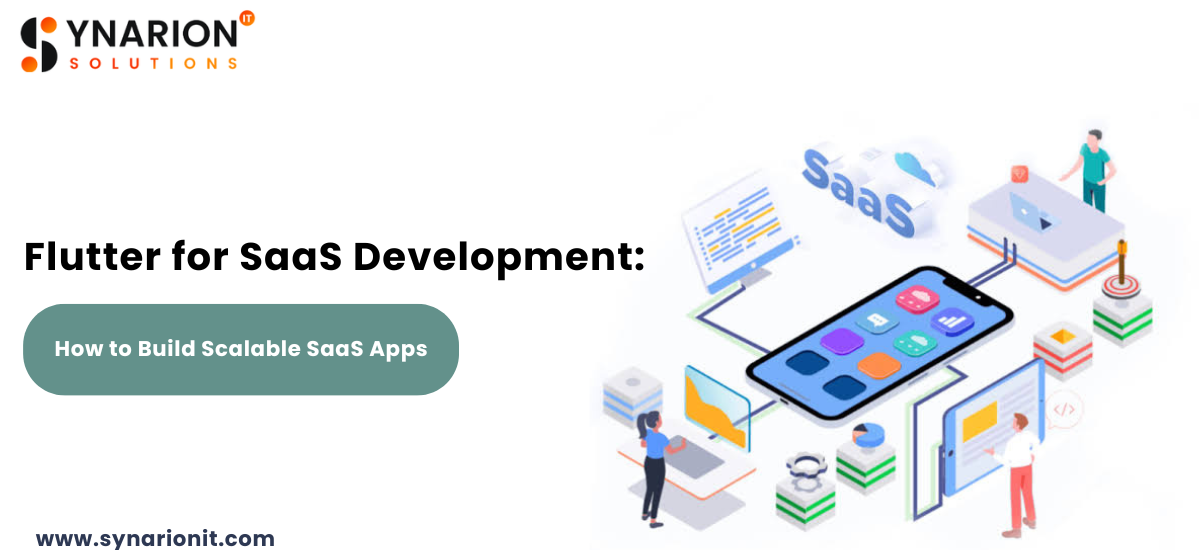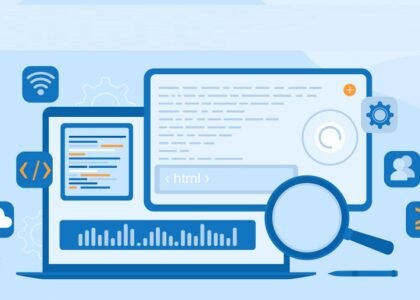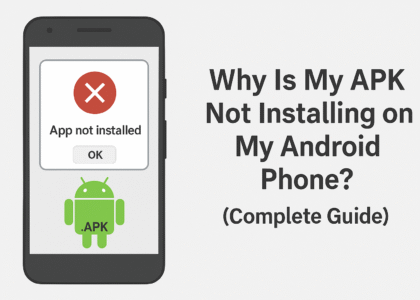The Software-as-a-Service (SaaS) industry has experienced exponential growth in recent years. Businesses are increasingly adopting cloud-based solutions to provide scalable and cost-effective services. However, developing a SaaS application that is efficient, high-performing, and scalable requires the right technology stack. One of the most powerful frameworks for SaaS development is Flutter.
Flutter, developed by Google, offers a cross-platform development framework that enables businesses to build robust SaaS applications efficiently. In this blog, we will explore why Flutter is ideal for SaaS development, key steps to building a scalable SaaS app, and why you should hire Flutter app developers for your project.
Why Choose Flutter for SaaS Development?
Flutter provides several advantages that make it a great choice for building SaaS applications:
1. Cross-Platform Compatibility
Flutter allows developers to build applications for multiple platforms, including web, mobile (Android & iOS), and desktop, using a single codebase. This reduces development time and costs significantly, making it an excellent choice for SaaS startups and enterprises.
2. Faster Development & Cost Efficiency
With its hot reload feature, Flutter enables developers to see real-time code changes, improving productivity. The single codebase approach also eliminates the need for separate teams for different platforms, reducing costs.
3. High Performance & Native-Like Experience
Flutter uses Dart programming language and a highly optimized rendering engine (Skia), ensuring a smooth, native-like user experience. Performance is a crucial factor for SaaS apps handling large amounts of data and user requests.
4. Scalability & Customization
Flutter supports scalable architectures, allowing SaaS applications to grow as demand increases. It also provides highly customizable UI components that adapt to different user needs and branding.
5. Integration with Cloud Services & APIs
A SaaS app requires seamless integration with cloud services such as AWS, Firebase, and third-party APIs. Flutter provides excellent support for integrating REST APIs, GraphQL, and cloud storage solutions, making it a reliable choice for SaaS development.
Key Steps to Building a Scalable SaaS App with Flutter
1. Define Your SaaS App Requirements
Before starting development, clearly outline the core functionality of your SaaS application. Identify:
- Target audience
- Essential features (subscription management, user authentication, dashboard, analytics, etc.)
- Monetization model (subscription-based, freemium, or pay-per-use)
- Required third-party integrations
2. Choose the Right Architecture
To ensure scalability, choosing the right architecture is crucial. Common architectures for SaaS applications include:
- Microservices Architecture: Helps in scaling different modules independently.
- Serverless Computing: Reduces operational overhead by leveraging cloud-based services like AWS Lambda and Firebase Functions.
- Monolithic Architecture: Suitable for smaller SaaS applications that do not require extensive scaling initially.
3. Leverage Flutter’s UI Capabilities
A well-designed UI enhances user experience and retention. Flutter’s UI toolkit includes:
- Pre-designed widgets for responsive and attractive UI
- Support for Material Design and Cupertino widgets for a native feel
- Custom animations for an interactive experience
4. Implement Secure User Authentication
Security is a critical aspect of SaaS applications. Implement robust authentication mechanisms such as:
- Firebase Authentication
- OAuth 2.0
- Multi-factor authentication (MFA)
- Role-based access control (RBAC) for different user levels
5. Enable Cloud Integration & Data Management
A scalable SaaS application requires efficient cloud integration. With Flutter, you can integrate:
- Google Firebase for real-time database, authentication, and cloud storage
- AWS services for backend scalability
- RESTful & GraphQL APIs to connect with third-party tools and services
6. Optimize Performance for Scalability
Performance optimization is crucial to handle increasing user traffic. Ensure:
- Efficient data caching using Hive or SharedPreferences
- Load balancing to distribute requests evenly
- Asynchronous programming with Dart’s Future & Stream API
7. Implement a Subscription & Billing System
Since SaaS applications rely on subscriptions, integrating a reliable payment gateway is essential. Use:
- Stripe, PayPal, or Razorpay for secure transactions
- In-app purchases (IAP) for mobile-based subscriptions
- Automated billing & invoicing systems to manage user payments
8. Test & Debug for a Seamless Experience
To ensure a bug-free and high-performing application:
- Conduct unit testing and UI testing with Flutter’s testing framework
- Use Firebase Crashlytics to monitor app crashes
- Implement CI/CD pipelines for continuous deployment
9. Launch & Scale Your SaaS App
Once your app is tested and refined, deploy it to production and monitor user behavior. Use analytics tools like Google Analytics, Mixpanel, or Amplitude to track performance and scale accordingly.
Why You Should Hire Flutter App Developers
While Flutter simplifies app development, building a high-performing SaaS app requires expertise. Here’s why you should hire the best Flutter developers:
1. Expertise in SaaS & Cloud Integration
Professional Flutter developers have in-depth knowledge of SaaS application structures, cloud integrations, and API management.
2. Efficient Development & Faster Deployment
Experienced developers streamline the development process, reducing time-to-market and ensuring smooth app deployment.
3. Scalability & Performance Optimization
A skilled Flutter development team ensures that the app is optimized for performance, scalability, and future growth.
4. Security & Compliance
Flutter developers implement best security practices, including data encryption, secure authentication, and compliance with GDPR, HIPAA, or other regulations.
5. Ongoing Maintenance & Support
SaaS applications require continuous monitoring and updates. A dedicated Flutter development team ensures regular maintenance and feature enhancements.
Conclusion
Flutter has emerged as a powerful framework for SaaS development, offering cost-effective, scalable, and high-performance solutions. Its cross-platform capabilities, rapid development cycle, and seamless integration with cloud services make it an ideal choice for businesses looking to build SaaS applications.
To create a successful SaaS app, it is essential to hire Flutter app developers with expertise in scalable architectures, cloud computing, and API integration. By partnering with a skilled development team, businesses can ensure their SaaS app is future-proof, user-friendly, and capable of handling high demand.






